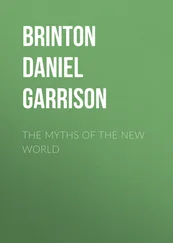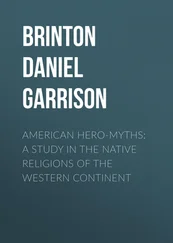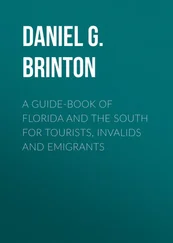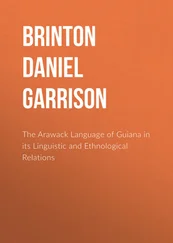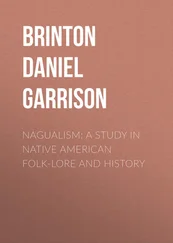Daniel Brinton - The Lenâpé and their Legends
Здесь есть возможность читать онлайн «Daniel Brinton - The Lenâpé and their Legends» — ознакомительный отрывок электронной книги совершенно бесплатно, а после прочтения отрывка купить полную версию. В некоторых случаях можно слушать аудио, скачать через торрент в формате fb2 и присутствует краткое содержание. Жанр: foreign_antique, foreign_prose, на английском языке. Описание произведения, (предисловие) а так же отзывы посетителей доступны на портале библиотеки ЛибКат.
- Название:The Lenâpé and their Legends
- Автор:
- Жанр:
- Год:неизвестен
- ISBN:нет данных
- Рейтинг книги:4 / 5. Голосов: 1
-
Избранное:Добавить в избранное
- Отзывы:
-
Ваша оценка:
- 80
- 1
- 2
- 3
- 4
- 5
The Lenâpé and their Legends: краткое содержание, описание и аннотация
Предлагаем к чтению аннотацию, описание, краткое содержание или предисловие (зависит от того, что написал сам автор книги «The Lenâpé and their Legends»). Если вы не нашли необходимую информацию о книге — напишите в комментариях, мы постараемся отыскать её.
The Lenâpé and their Legends — читать онлайн ознакомительный отрывок
Ниже представлен текст книги, разбитый по страницам. Система сохранения места последней прочитанной страницы, позволяет с удобством читать онлайн бесплатно книгу «The Lenâpé and their Legends», без необходимости каждый раз заново искать на чём Вы остановились. Поставьте закладку, и сможете в любой момент перейти на страницу, на которой закончили чтение.
Интервал:
Закладка:
The subjects had reference not merely to matters of present interest, but to the former history of their nation, and were directed "to the preservation of the memory of famous men, and to the recollection of events and actions of note." Therefore, their Agamemnons felt no anxiety for the absence of a Homer, but "confidently reckoned that their noble deeds would be held in memory long after their bodies had perished." [100] Footnote_100_100 See Loskiel, Geschichte der Mission , etc., pp. 32, 33; Heckewelder, History of the Indian Nations , chap. X.
The material on which the drawings were made was generally so perishable that few examples have been left to us. One, a stone about seven inches long, found in central New Jersey, has been described and figured by Dr. Abbott. [101] Footnote_101_101 Dr. Charles C. Abbott, Primitive Industry , pp. 71, 207, 347, 379, 384, 390, 391. Dr. Abbott's suggestion that the bird's head seen on several specimens might represent the totem of the Turkey gens of the Lenape cannot be well founded, if Heckewelder is correct in saying that their totemic mark was only the foot of the fowl. Ind. Nations , p. 253.
It represents an arrow crossing certain straight lines. Several "gorgets" (smooth stone tablets pierced with holes for suspension, and probably used for ceremonial purposes), stone knives and pebbles, showing inscribed marks and lines, and rude figures, are engraved in Dr. Abbott's book; others similar have been seen in Bucks and Berks counties, Pa.
There was a remarkable series of hieroglyphics, some eighty in number, on a rock at Safe Harbor, on the Susquehanna. They have been photographed and described by Prof. T. C. Porter, of Lancaster, but have yet to be carefully analyzed. [102] Footnote_102_102 See Proceedings Amer. Philos. Soc. , Vol. X.
From its location, it was probably the work of the Susquehannocks, and did not belong to the general system of Algonkin pictography.
If the rude drawings appended to the early treatises as signatures of native sachems be taken as a guide, little or no uniformity prevailed in the personal signs. The same chieftain would, on various occasions, employ symbols differing so widely that they have no visible relation. [103] pgepubid00084 The subject is discussed, and comparative drawings of the native signatures reproduced, by Prof. D. B. Brunner, in his useful work, The Indians of Berks County, Pa. , p. 68 (Reading, 1881).
An interesting incident is recorded by Friend John Richardson when on a visit to William Penn, at his manor of Pennsburg, in 1701. Penn asked the Indian interpreter to give him some idea of what the native notion of God was. The interpreter, at a loss for words, had recourse to picture writing, and describing a number of circles, one inside the other, he pointed to the centre of the innermost and smallest one, and there, "placed, as he said, by way of representation, the Great Man." [104] Footnote_104_104 John Richardson's Diary, quoted in An Account of the Conduct of the Society of Friends toward the Indian Tribes , pp. 61, 62 (London, 1844).
The explanation was striking and suggestive, and hints at the meaning of the not infrequent symbol of the concentric circles.
An alleged piece of Delaware pictography is copied by Schoolcraft [105] Footnote_105_105 History and Statistics of the Indian Tribes , Vol. I, plate 47, B, and pages 353, 354
from the London Archæologia , Vol. IV. It purports to be an inscription found on the Muskingum river in 1780, and the interpretation is said to have been supplied by the celebrated Delaware chief, Captain White Eyes (Coquethagechton). As interpreted, it relates to massacres of the whites by the Delaware chief, Wingenund, in the border war of 1763.
There is a tissue of errors here. The pictograph, "drawn with charcoal and oil on a tree," must have been quite recent, and is not likely to have referred to events seventeen years antecedent. There is no evidence that Wingenund took part in Pontiac's conspiracy, and he was the consistent friend of the whites. [106] Footnote_106_106 "Amiable and benevolent," says Heckewelder, whose life he aided in saving on one occasion. Indian Nations , p. 285.
Several of the characters are not like Indian pictographs. And finally, White Eyes, the alleged interpreter in 1780, had died at Tuscarawas, two years before, Nov. 10th, 1778! [107] Footnote_107_107 E. de Schweinitz, Life of Zeisberger , p. 469.
The Algonkin nations very generally preserved their myths, their chronicles, and the memory of events, speeches, etc., by means of marked sticks. As early as 1646, the Jesuit missionaries in Canada made use of these to teach their converts the prayers of the Church and their sermons. [108] Footnote_108_108 Relation des Jesuites , 1646, p. 33
The name applied to these record or tally sticks was, among the Crees and Chipeways, massinahigan , which is the common word now for book, but which originally meant "a piece of wood marked with fire," from the verb masinákisan , I imprint a mark upon it with fire, I burn a mark upon it, [109] Footnote_109_109 Baraga, A Dictionary of the Otchipwe Language , s. v.
thus indicating the rude beginning of a system of mnemonic aids. The Lenape words for book, malackhickan , Camp., mamalekhican Zeis., were probably from the same root.
In later days, instead of burning the marks upon the sticks, they were painted, the colors as well as the figures having certain conventional meanings. [110] Footnote_110_110 For an example, see de Schweinitz, Life of Zeisberger , p. 342.
These sticks are described as about six inches in length, slender, though varying in shape, and tied up in bundles. [111] Footnote_111_111 Documentary History of New York , Vol. IV, p. 437.
Such bundles are mentioned by the interpreter Conrad Weiser, as in use in 1748 when he was on his embassy in the Indian country. [112] Footnote_112_112 Journal of Conrad Weiser ; in Early History of Western Penna. , p. 16.
The expression, "we tied up in bundles," is translated by Mr. Heckewelder, olumapisid , and a head chief of the Lenape, usually called Olomipees , was thus named, apparently as preserver of such records. [113] Footnote_113_113 Tran. Am. Phil. Soc. , Vol. IV, p. 384.
I shall return on a later page to the precise meaning of this term.
The word signifying to paint was walamén , which does not appear in western dialects, but is found precisely the same in the Abnaki, where it is given by Rasles, 8ramann [114] Footnote_114_114 A Dictionary of the Abnaki Language , s. v. Peinture .
, which, transliterated into Delaware (where the l is substituted for the r ), would be w'lam'an . From this word came Wallamünk , the name applied by the natives to a tract in New Castle county, Delaware, since at that locality they procured supplies of colored earth, which they employed in painting. It means "the place of paint." [115] Footnote_115_115 See ante p. 53. Mr. Francis Vincent, in his History of the State of Delaware , p. 36 (Phila., 1870), says of the colored earth of that locality, that it is "a highly argillaceous loam, interspersed with large and frequent masses of yellow, ochrey clay, some of which are remarkable for fineness of texture, not unlike lithomarge, and consists of white, yellow, red and dark blue clay in detached spots." The Shawnees applied the same word to Paint Creek, which falls into the Scioto, close to Chilicothe. They named it Alamonee sepee , of which Paint Creek is a literal rendering. Rev. David Jones, A Journal of Two Visits to the West Side of the Ohio in 1772 and 1773 , p. 50.
Интервал:
Закладка:
Похожие книги на «The Lenâpé and their Legends»
Представляем Вашему вниманию похожие книги на «The Lenâpé and their Legends» списком для выбора. Мы отобрали схожую по названию и смыслу литературу в надежде предоставить читателям больше вариантов отыскать новые, интересные, ещё непрочитанные произведения.
Обсуждение, отзывы о книге «The Lenâpé and their Legends» и просто собственные мнения читателей. Оставьте ваши комментарии, напишите, что Вы думаете о произведении, его смысле или главных героях. Укажите что конкретно понравилось, а что нет, и почему Вы так считаете.




